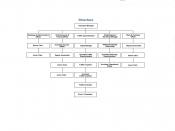INTRODUCTION
Change in organizations can be in response to external forces, such as market shifts, competitive pressures, and technological innovations, or it can be internally motivated, such as by managers trying to improve existing methods and practices. Regardless of its origins, change does affect people and their relationships in organizations. Organisational change can be introduced through a number of approaches, used singly or in combination. Some of these approaches emphasize the content of what is to be changed; others stress the process of how change is to be accomplished.
Harold Leavitt (1964) delineates three approaches to organization change: "structure, technology, and people." However, organisation change is far more complex than the particular approach used to implement change. Anyhow, to implement change in any organisation, people, structure and culture all need to be pay attention. Among those three components, people are likely to be the most promising target for any change programme.
PEOPLE, STRUCTURE AND CULTURE IN ORGANISATION CHANGE
By using Kurt Lewin famous 'unfreeze--change--freeze' model, the organisational change can be described as the following steps. The first step of any change process is to unfreeze the present pattern of behaviour as a way of managing resistance to change. The second step, movement, involves making the actual changes that will move the organisation to another level of response. The final stage of the change process, refreezing, involves stabilising or institutionalising these changes by establishing systems that make these behavioural patterns relatively secure against change.
Goodstein and Burke (1991) suggest that organisational change can occur at three levels, which involve:
l Changing the individuals who work in the organisation -that is, their skills, values, attitudes, and eventually behaviour- but making sure that such individual behavioural change is always regarded as instrumental to organisational change.
l Changing various organisational structures and systems- reward...



I don't like you
I hate you.
1 out of 3 people found this comment useful.